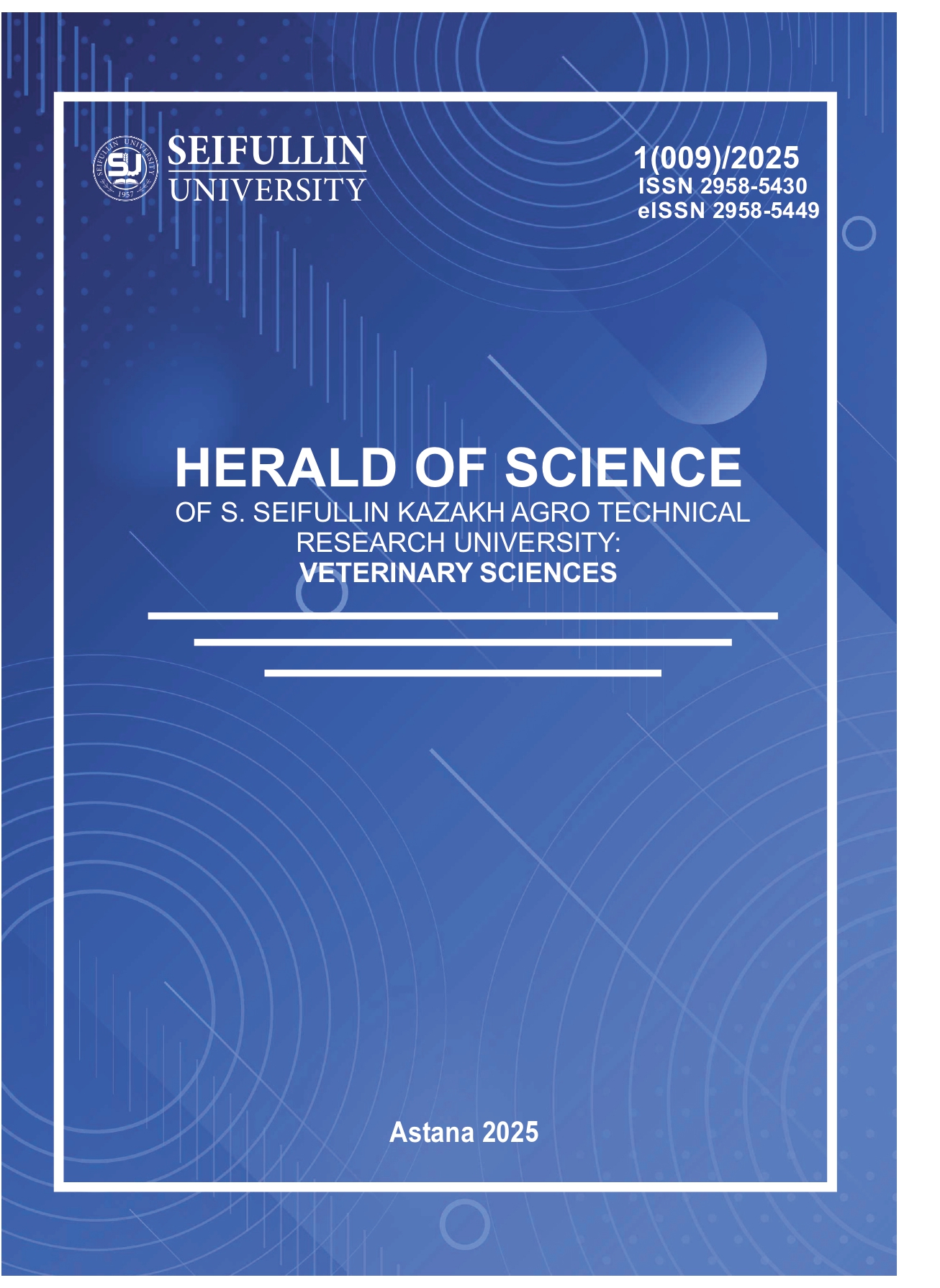Clinical status in viral diseases of dogs complicated by associations of opportunistic microorganisms
DOI:
https://doi.org/10.51452/kazatuvc.2025.5(009).1854Ключевые слова:
adenovirus; blood biochemistry; hematology; opportunistic microorganisms; carnivorous plague.Аннотация
Background and Aim. Infectious pathologies are prevalent among canines, with the majority being of viral etiology. The most notable examples include carnivore plague and adenovirus infection. A distinctive attribute of viral infections is their tendency to occur in clusters, whereas monoinfections are observed with a lower frequency. Clinically, high mortality rates are frequently observed in viral diseases, often due to the development of secondary infections that complicate the course of the primary disease. The objective of the present study was to investigate the clinical manifestations (symptoms, haematological and biochemical blood parameters) of viral diseases (i.e. canine plague and adenovirus infection) in dogs complicated by opportunistic microorganisms, in the conditions of Kostanay city, RK.
Materials and Methods. Canines of various breeds, sexes and age groups were utilised as subjects for the study. The diagnosis of viral diseases in canines was conducted in a comprehensive manner. Dogs with confirmed viral infection were sampled for the isolation and identification of opportunistic microorganisms.
Results. In Kostanay city, from 2022 to 2024, 15 cases of plague of carnivores and 12 cases of adenovirus infection were registered, 13 isolates of opportunistic microorganisms were detected and identified. Blood analysis in monoinfection showed decreased erythrocyte count, haemoglobin and platelet levels. In adenovirus type CAV-1, there were abnormalities in total bilirubin, ALT, AST alkaline phosphotase, and albumin. Blood analysis in viral diseases complicated by associations of opportunistic microorganisms showed leukocytosis, increased neutrophils, globulins and urea indicating the development of secondary infection.
Conclusion. The combination of clinical symptoms and laboratory data allow a more accurate assessment of the severity of the animal's condition and identify lesions of various body systems. The prevalence of opportunistic microorganisms in viral pathologies aggravate the course of the main disease and cause the development of secondary infection.

